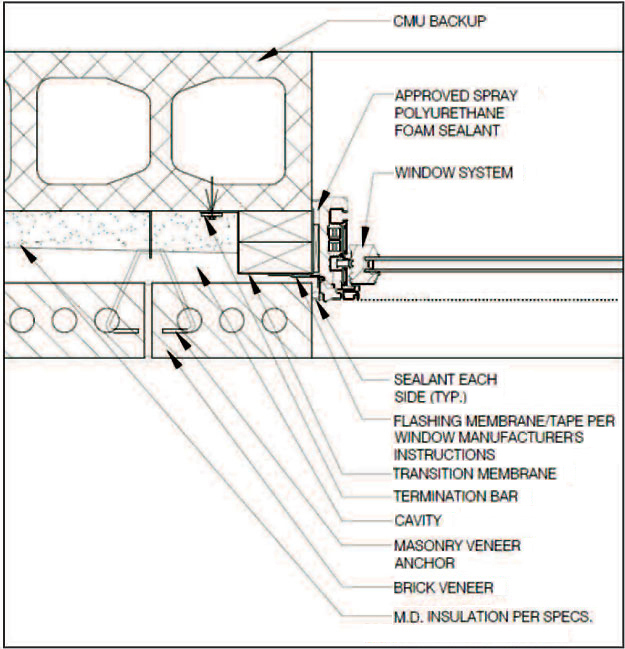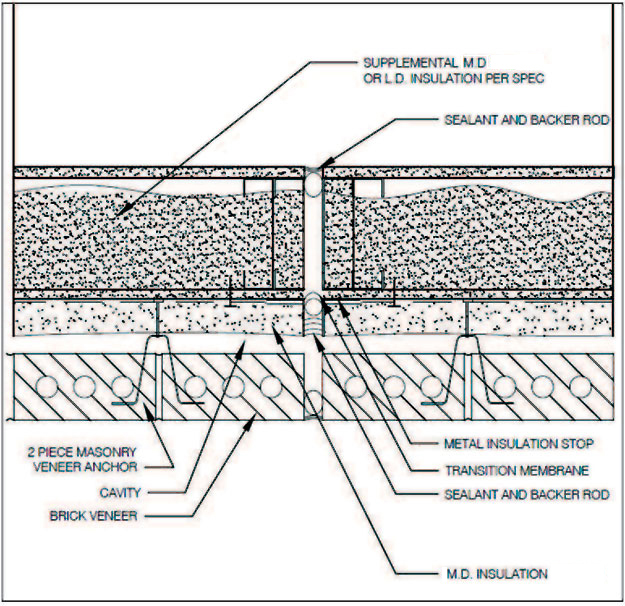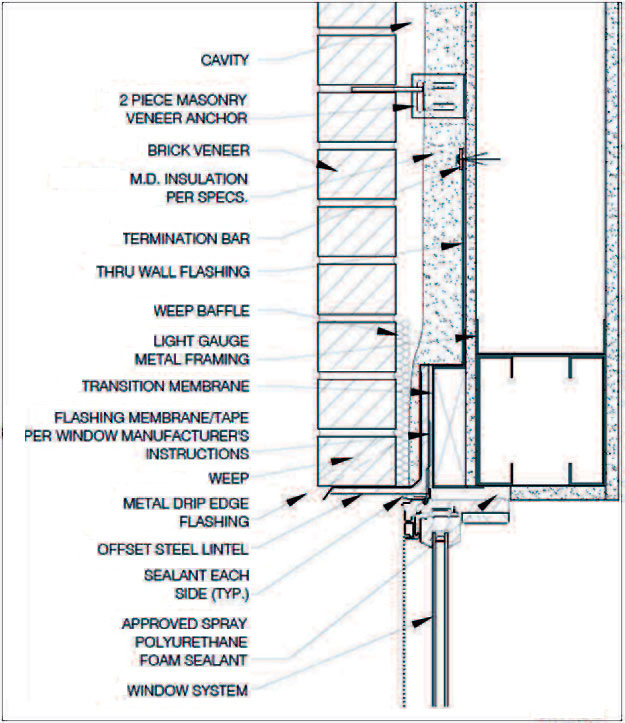Continuous Insulation: Spray Foam Compared to Rigid Boards
Air Sealing
Anyone who has looked at the true performance drivers of energy efficiency in a wall quickly discovers that unwanted air infiltration is at least as important as thermal resistance if not more so. Energy codes have recognized this phenomenon and now contain mandatory provisions to properly address air sealing of wall assemblies. Since there has been a need to properly define and understand the technical aspects of effective air barriers, the national Air Barrier Association of America (ABAA) has become recognized as the industry resource.
They point out that an air barrier system is a combination of building components within the building enclosure—designed, installed and integrated in such a manner as to stop the uncontrolled flow of air into and out of the building enclosure. They further indicate that effective air barriers have positive impacts not only on heating and cooling costs, but also on moisture problems, indoor air quality, and acoustics. Overall, proper air sealing with an air barrier system results in more sustainable and durable buildings that can reduce greenhouse gas emission.
ABAA also tests and rates air barrier materials which they define based on a tested air permeance rating. To be a qualifying air barrier material, the air permeance must be equal to or less than 0.004 cubic feet of air per minute per square foot of material when tested at an air pressure of 1.57 psf. The testing basis for this rating is ASTM E2178 – “Standard Test Method for Air Permeance of Building Materials.” Most foam insulation, particularly if it is closed cell, qualifies as an air barrier material. Keep in mind, of course, that this test determines the amount of air permeance that migrates through tested materials. It does not address field conditions of holes or gaps in the material. Therefore, ABAA also conducts tests to determine what qualifies as a full air barrier assembly based on ASTM E 2357 – “Standard Test Method for Determining Air Leakage of Air Barrier Assemblies.” In this case, the total tested system must demonstrate performance as a continuous air barrier, perform as a liquid drainage plane, accommodate movements of building materials, and provide connections to adjacent materials to prevent air leakage at all critical locations including connections, joints and penetrations.


Images courtesy of ICYNENE, Inc.
Critical areas for barrier sealing include window jambs (top) and control joints (bottom) that need to join with transition materials or be separated to allow for building movement.
Among the many rigid foam insulation boards that exist in the marketplace, only four have currently received the ABAA air barrier assembly designation. However, in order to qualify, these products typically require sealants or tape to be applied at all joints and penetrations which can be a very labor intensive process. Furthermore, the sealing tends to get applied on the exterior which is the most challenging location in terms of temperature and humidity changes not to mention quality control of the work being performed. By contrast, virtually all medium-density spray foam products that have been tested have been found to be air impermeable. The thickness where this characteristic is achieved is typically 1.5 inches or less depending on the specific product used. For an exterior continuous insulation application, medium-density spray foam products have the advantage of creating a continuous insulation and air barrier layer in one step. With no board joints to tape or seal, airtight performance becomes much easier to deliver. This is notably true around wall penetrations for mechanical, electrical, plumbing or other components which are a traditional weak point among conventional air barriers. The one step application process generates cost and construction schedule savings compared to the multiple steps of taping, sealing, and filling encountered with other systems.
Part of the testing for a full air barrier assembly requires manufacturers to prove that materials are chemically and adhesively compatible with adjacent materials proposed for use. Those adjacent materials include flashings and membranes commonly found at wall openings such as windows and doors or at wall transitions such as the base of a masonry wall with weep holes. As a result, the transition materials/membranes that are compatible with a particular spray foam manufacturer are also commonly identified by that manufacturer, although they may be made by others. Collectively, the proper use and detailing of spray foam insulation with appropriate transition membranes creates a complete, effective and durable air barrier system. Construction details have been developed by manufacturers to guide architects on how to best accomplish the air barrier assembly using spray foam products. Typical design and implementation recommendations for air barrier system details include:
► Providing transition membranes over flashings and movement joints and tie them in at the rear plane of the foam where the temperature and humidity conditions are most constant.
► Provide termination bars (locking strips) at the leading edges of transition membranes to ensure a mechanical as well as adhesive bond is provided.
► Provide multiple lines of defense at key locations such as control and movement joints.
► Ensure that details allow for expected building movements such as creep and settlement.
Water-Resistant Barrier
Beyond an air barrier, building codes require a water resisive barrier to maintain the integrity of all wall assemblies. Claddings are not universally designed to prevent water penetration and in fact, some are designed to accept and manage water penetration behind the cladding layer. As such, there is a need for a barrier that prevents the water from entering the rest of the wall assembly and causing deterioration or damage. In practice this takes the form of roll or sheet products, self-adhered membranes or liquid applied membranes. Some of these materials may or may not double as an air barrier as well.

Image courtesy of ICYNENE, Inc.
In this window head detail, the spray foam working in conjunction with the thru wall flashing creates a water-resistive barrier that facilitates any accumulated moisture in the wall cavity to drain out via the weep and drip edge flashing systems
When rigid insulation boards are used such as EPS or XPS, a separate water resistant barrier may be needed since not all of these products are rated to perform this function. In fact some of them will actually absorb water with varying impact on the thermal performance of the insulation. Comparatively, most medium-density, closed cell, spray foam products are considered water-resistive barriers since they have very low water absorption and are capable of shedding water. This is determined by ASTM D 2842 - “Standard Test Method for Water Absorption of Rigid Cellular Plastic.” This test method provides a means for measuring absorption as a result of direct contact exposure to free water for a test period of at least 96 hours with a minimum of 2 inches of water head. Medium-density spray foam products that pass this test and are used as exterior continuous insulation consequently meet the need for a water-resistive barrier. Essentially, any water that gets past the cladding system meets the water-resistive exterior surface of the foam and drains down along the face where it can exit through weep holes or other means. In this way it does not continue progressing into the wall assembly where it could cause damage. Remember that in order to function as intended, flashings are still needed at transitions to ensure proper drainage and meet installation and warranty requirements associated with the penetration. In essence, spray foam insulation can act as the water resistant barrier for the wall field area and then integrate with the flashing at penetrations, openings, or other transition points.









